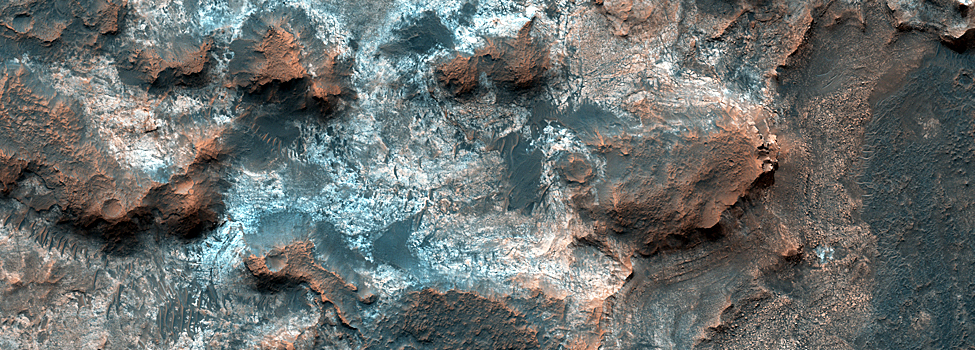Sedimentary/Layering Processes Theme Description
Lead: Cathy Weitz •
Images in this theme
Mars, like the Earth, appears to be a layered planet, which has major implications for processes that have formed the geology we see today on the surface.
Anyone who has ever gone to the Grand Canyon and seen the layering along the canyon walls may know that each layer records a different history for this region,
such as a time in the past when the region was covered with a sea and sedimentary layers were emplaced, or a time when volcanism was active and produced volcanic layers.
The arrangement of layers relative to each other, such as does one unit lie on top of another or does one layer cut through another, also tells us
about the stratigraphy, which is how geologists determine the sequence of processes that occurred over time in a particular area.
HiRISE may show us that the layering on Mars is even thinner and more prevalent than we now know. HiRISE images of different layers on Mars
can answer questions about the processes that produced the layers. For example, are the layers the result of sediments deposited in lakes or oceans
on Mars? Do the layers form from volcanic eruptions pumping ash into the atmosphere that later settles on to the ground? Or perhaps the layers form
from cyclic changes in the amount of dust that is entrained into the atmosphere and later deposited on the ground. Analysis of HiRISE data may shed new
insight into the physical properties and age relationships of the layers which can then help scientists determine how the layers formed and what role water
and climate change played in their deposition.
